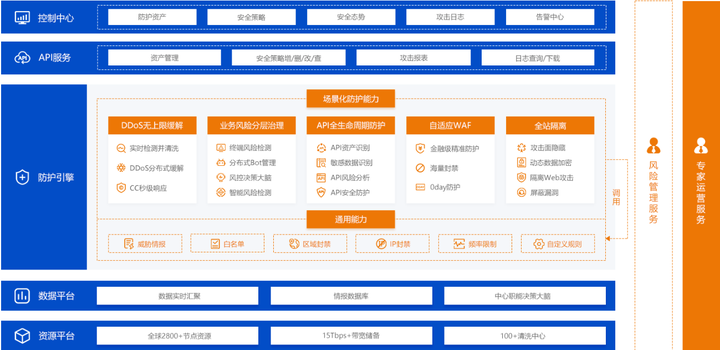一、引言
遗传算法(Genetic Algorithm, GA)是一种模拟生物进化过程的启发式搜索算法,它通过模拟自然选择、遗传、交叉和突变等生物学机制来优化问题的解决方案。遗传算法因其通用性、高效性和鲁棒性,在多个领域中得到了广泛应用,如工程、科研、经济和艺术等。

二、算法原理
遗传算法的核心原理包括以下几个方面:
- 编码:将问题的解编码为染色体(通常为一串数字或符号序列)。
- 初始种群:随机生成一组解作为初始种群。
- 适应度函数:定义一个适应度函数来评估每个个体的性能。
- 选择:根据适应度选择个体进行繁殖,高适应度的个体有更高的被选择概率。
- 交叉:选中的个体通过交叉操作生成新的后代,模拟基因重组。
- 突变:以一定概率随机改变个体的某些基因,增加种群的多样性。
- 新一代种群:形成新的种群,重复上述过程直到满足终止条件。

三、数据结构
遗传算法中常用的数据结构包括:

- 染色体:表示问题的解,通常为一串数字或符号序列。
- 适应度数组:存储每个个体适应度值的数组。
- 个体(Individual):表示一个解。通常用一个染色体(Chromosome)来表示,染色体由基因(Gene)组成。
- 种群(Population):由多个个体组成,是算法的基础单元。
- 适应度函数(Fitness Function):用于评估个体的优劣。
- 选择策略(Selection Strategy):确定哪些个体会被选择进行繁殖。常见的策略包括轮盘赌选择、锦标赛选择等。
- 交叉策略(Crossover Strategy):决定如何将两个父母个体的基因组合成子代个体。常见的策略包括单点交叉、两点交叉等。
- 变异策略(Mutation Strategy):在个体中引入随机变异,以增加种群的多样性。

四、算法使用场景

遗传算法适用于解决以下类型的优化问题:
- 组合优化问题:如旅行商问题(TSP)、车辆路径问题(VRP)等。

- 参数优化问题:如神经网络权重优化、机器学习模型参数调优等。

- 调度问题:如作业调度、任务调度等。
- 设计问题:如结构设计、网络设计等。
- 数据挖掘:特征选择、聚类分析。
五、算法实现

- 初始化种群:随机生成一组个体,每个个体代表一个可能的解。
- 评估适应度:根据目标函数评估每个个体的适应度。
- 选择操作:根据适应度选择较优的个体进行繁殖。
- 交叉操作:将选择出来的个体配对,通过交叉生成新个体。
- 变异操作:对新个体进行随机变异,以保持种群的多样性。
- 替代操作:用新生成的个体替代旧种群中的个体,形成新的种群。
- 终止条件:当达到预定的终止条件(如最大代数或适应度阈值)时,算法停止。
import numpy as npdef initialize_population(pop_size, gene_length):return np.random.randint(2, size=(pop_size, gene_length))def fitness_function(individual):# 示例:适应度函数为个体基因的汉明重量return np.sum(individual)def select(population, fitness_values):# 示例:轮盘赌选择probabilities = fitness_values / np.sum(fitness_values)indices = np.random.choice(range(len(population)), size=len(population), p=probabilities)return population[indices]def crossover(parent1, parent2):# 示例:单点交叉point = np.random.randint(1, len(parent1))child1 = np.concatenate((parent1[:point], parent2[point:]))child2 = np.concatenate((parent2[:point], parent1[point:]))return child1, child2def mutate(individual, mutation_rate):# 示例:基因突变for i in range(len(individual)):if np.random.rand() < mutation_rate:individual[i] = 1 - individual[i]return individualdef genetic_algorithm(population_size, gene_length, num_generations):population = initialize_population(population_size, gene_length)for _ in range(num_generations):fitness_values = np.array([fitness_function(ind) for ind in population])population = select(population, fitness_values)next_generation = []while len(next_generation) < population_size:parent1, parent2 = np.random.choice(population, size=2, replace=False)child1, child2 = crossover(parent1, parent2)child1 = mutate(child1, 0.01)child2 = mutate(child2, 0.01)next_generation.extend([child1, child2])population = np.array(next_generation)best_individual = population[np.argmax(fitness_values)]return best_individual# 运行遗传算法
best_solution = genetic_algorithm(100, 10, 50)
print("Best solution:", best_solution)六、同类型算法对比
粒子群优化(PSO):基于个体与群体之间的信息共享,收敛速度较快,但容易陷入局部最优。
蚁群算法(ACO):模拟蚂蚁觅食行为,适用于路径优化问题,但计算量较大。
模拟退火(SA):借鉴物理退火过程,适用于大规模问题,容易避免局部最优但计算复杂度较高。

遗传算法与其他优化算法(如粒子群优化、模拟退火、蚁群算法等)相比,具有以下特点:
-
全局搜索能力强:遗传算法通过模拟自然进化过程,具有较强的全局搜索能力。
-
鲁棒性:遗传算法对初始种群和参数设置不敏感,具有较强的鲁棒性。
-
适用于多种优化问题:遗传算法适用于连续、离散及混合类型的优化问题。
-
编码简单:遗传算法的编码方式较为简单,易于实现。
七、多语言代码实现

Java
import java.util.ArrayList;
import java.util.Collections;
import java.util.List;
import java.util.Random;class Individual {List<Integer> genes;double fitness;public Individual(int geneLength) {genes = new ArrayList<>(Collections.nCopies(geneLength, 0));Random rand = new Random();for (int i = 0; i < geneLength; i++) {genes.set(i, rand.nextInt(2)); // Binary genes}}public void calculateFitness() {// Example fitness function: sum of genesfitness = genes.stream().mapToInt(Integer::intValue).sum();}
}class GeneticAlgorithm {private List<Individual> population;private int geneLength;private int populationSize;private double mutationRate;private int generations;public GeneticAlgorithm(int geneLength, int populationSize, double mutationRate, int generations) {this.geneLength = geneLength;this.populationSize = populationSize;this.mutationRate = mutationRate;this.generations = generations;population = new ArrayList<>();for (int i = 0; i < populationSize; i++) {population.add(new Individual(geneLength));}}public void evolve() {for (int generation = 0; generation < generations; generation++) {evaluateFitness();List<Individual> newPopulation = new ArrayList<>();while (newPopulation.size() < populationSize) {Individual parent1 = selectParent();Individual parent2 = selectParent();Individual child = crossover(parent1, parent2);mutate(child);newPopulation.add(child);}population = newPopulation;}}private void evaluateFitness() {population.forEach(Individual::calculateFitness);}private Individual selectParent() {// Simple roulette wheel selectiondouble totalFitness = population.stream().mapToDouble(i -> i.fitness).sum();double rand = new Random().nextDouble() * totalFitness;double sum = 0;for (Individual individual : population) {sum += individual.fitness;if (sum >= rand) return individual;}return population.get(population.size() - 1); // Should not reach here}private Individual crossover(Individual parent1, Individual parent2) {Individual child = new Individual(geneLength);int crossoverPoint = new Random().nextInt(geneLength);for (int i = 0; i < geneLength; i++) {child.genes.set(i, i < crossoverPoint ? parent1.genes.get(i) : parent2.genes.get(i));}return child;}private void mutate(Individual individual) {for (int i = 0; i < geneLength; i++) {if (new Random().nextDouble() < mutationRate) {individual.genes.set(i, 1 - individual.genes.get(i));}}}
}
Python
import randomclass Individual:def __init__(self, gene_length):self.genes = [random.randint(0, 1) for _ in range(gene_length)]self.fitness = 0def calculate_fitness(self):self.fitness = sum(self.genes)class GeneticAlgorithm:def __init__(self, gene_length, population_size, mutation_rate, generations):self.gene_length = gene_lengthself.population_size = population_sizeself.mutation_rate = mutation_rateself.generations = generationsself.population = [Individual(gene_length) for _ in range(population_size)]def evolve(self):for _ in range(self.generations):self.evaluate_fitness()new_population = []while len(new_population) < self.population_size:parent1 = self.select_parent()parent2 = self.select_parent()child = self.crossover(parent1, parent2)self.mutate(child)new_population.append(child)self.population = new_populationdef evaluate_fitness(self):for individual in self.population:individual.calculate_fitness()def select_parent(self):total_fitness = sum(individual.fitness for individual in self.population)rand = random.uniform(0, total_fitness)sum_ = 0for individual in self.population:sum_ += individual.fitnessif sum_ >= rand:return individualreturn self.population[-1]def crossover(self, parent1, parent2):crossover_point = random.randint(0, self.gene_length - 1)child = Individual(self.gene_length)child.genes = parent1.genes[:crossover_point] + parent2.genes[crossover_point:]return childdef mutate(self, individual):for i in range(self.gene_length):if random.random() < self.mutation_rate:individual.genes[i] = 1 - individual.genes[i]
C++
#include <iostream>
#include <vector>
#include <algorithm>
#include <random>class Individual {
public:std::vector<int> genes;double fitness;Individual(int geneLength) : genes(geneLength), fitness(0) {std::random_device rd;std::mt19937 gen(rd());std::uniform_int_distribution<> dis(0, 1);for (int &gene : genes) {gene = dis(gen);}}void calculateFitness() {fitness = std::accumulate(genes.begin(), genes.end(), 0.0);}
};class GeneticAlgorithm {std::vector<Individual> population;int geneLength;int populationSize;double mutationRate;int generations;public:GeneticAlgorithm(int geneLength, int populationSize, double mutationRate, int generations): geneLength(geneLength), populationSize(populationSize), mutationRate(mutationRate), generations(generations) {for (int i = 0; i < populationSize; ++i) {population.emplace_back(geneLength);}}void evolve() {for (int generation = 0; generation < generations; ++generation) {evaluateFitness();std::vector<Individual> newPopulation;while (newPopulation.size() < populationSize) {Individual parent1 = selectParent();Individual parent2 = selectParent();Individual child = crossover(parent1, parent2);mutate(child);newPopulation.push_back(child);}population = newPopulation;}}private:void evaluateFitness() {for (auto& individual : population) {individual.calculateFitness();}}Individual selectParent() {double totalFitness = 0;for (const auto& individual : population) {totalFitness += individual.fitness;}std::uniform_real_distribution<> dis(0, totalFitness);std::random_device rd;std::mt19937 gen(rd());double rand = dis(gen);double sum = 0;for (const auto& individual : population) {sum += individual.fitness;if (sum >= rand) {return individual;}}return population.back(); // Should not reach here}Individual crossover(const Individual& parent1, const Individual& parent2) {std::uniform_int_distribution<> dis(0, geneLength - 1);std::random_device rd;std::mt19937 gen(rd());int crossoverPoint = dis(gen);Individual child(geneLength);std::copy(parent1.genes.begin(), parent1.genes.begin() + crossoverPoint, child.genes.begin());std::copy(parent2.genes.begin() + crossoverPoint, parent2.genes.end(), child.genes.begin() + crossoverPoint);return child;}void mutate(Individual& individual) {std::uniform_real_distribution<> dis(0, 1);std::random_device rd;std::mt19937 gen(rd());for (int i = 0; i < geneLength; ++i) {if (dis(gen) < mutationRate) {individual.genes[i] = 1 - individual.genes[i];}}}
};
Go
package mainimport ("math/rand""time"
)type Individual struct {Genes []intFitness float64
}func NewIndividual(geneLength int) *Individual {genes := make([]int, geneLength)for i := range genes {genes[i] = rand.Intn(2)}return &Individual{Genes: genes}
}func (ind *Individual) CalculateFitness() {sum := 0for _, gene := range ind.Genes {sum += gene}ind.Fitness = float64(sum)
}type GeneticAlgorithm struct {Population []*IndividualGeneLength intPopulationSize intMutationRate float64Generations int
}func NewGeneticAlgorithm(geneLength, populationSize int, mutationRate float64, generations int) *GeneticAlgorithm {population := make([]*Individual, populationSize)for i := 0; i < populationSize; i++ {population[i] = NewIndividual(geneLength)}return &GeneticAlgorithm{Population: population,GeneLength: geneLength,PopulationSize: populationSize,MutationRate: mutationRate,Generations: generations,}
}func (ga *GeneticAlgorithm) Evolve() {for i := 0; i < ga.Generations; i++ {ga.EvaluateFitness()newPopulation := make([]*Individual, ga.PopulationSize)for j := 0; j < ga.PopulationSize; j++ {parent1 := ga.SelectParent()parent2 := ga.SelectParent()child := ga.Crossover(parent1, parent2)ga.Mutate(child)newPopulation[j] = child}ga.Population = newPopulation}
}func (ga *GeneticAlgorithm) EvaluateFitness() {for _, ind := range ga.Population {ind.CalculateFitness()}
}func (ga *GeneticAlgorithm) SelectParent() *Individual {totalFitness := 0.0for _, ind := range ga.Population {totalFitness += ind.Fitness}randValue := rand.Float64() * totalFitnesssum := 0.0for _, ind := range ga.Population {sum += ind.Fitnessif sum >= randValue {return ind}}return ga.Population[len(ga.Population)-1] // Should not reach here
}func (ga *GeneticAlgorithm) Crossover(parent1, parent2 *Individual) *Individual {crossoverPoint := rand.Intn(ga.GeneLength)child := NewIndividual(ga.GeneLength)copy(child.Genes[:crossoverPoint], parent1.Genes[:crossoverPoint])copy(child.Genes[crossoverPoint:], parent2.Genes[crossoverPoint:])return child
}func (ga *GeneticAlgorithm) Mutate(ind *Individual) {for i := range ind.Genes {if rand.Float64() < ga.MutationRate {ind.Genes[i] = 1 - ind.Genes[i]}}
}func main() {rand.Seed(time.Now().UnixNano())ga := NewGeneticAlgorithm(10, 100, 0.01, 50)ga.Evolve()
}
八、应用场景的整个代码框架

用遗传算法进行超参数调优,可构建如下的项目结构:
project/├── main.py├── ga.py├── objective.py├── utils.py├── requirements.txt└── README.mdmain.py
from ga import GeneticAlgorithm
from objective import objective_functiondef main():ga = GeneticAlgorithm(objective_function, pop_size=100, gene_length=5)best_solution, best_fitness = ga.run(generations=200)print(f"Optimal parameters: {best_solution}, Maximum fitness: {best_fitness}")if __name__ == '__main__':main()ga.py
import numpy as np
import randomclass GeneticAlgorithm:def __init__(self, objective_function, pop_size=50, gene_length=10, mutation_rate=0.01):self.objective_function = objective_functionself.pop_size = pop_sizeself.gene_length = gene_lengthself.mutation_rate = mutation_rateself.population = self.initialize_population()def initialize_population(self):return [np.random.rand(self.gene_length) for _ in range(self.pop_size)]def calculate_fitness(self):return [self.objective_function(ind) for ind in self.population]def selection(self, fitness):idx = np.random.choice(range(len(self.population)), size=len(self.population), p=fitness/np.sum(fitness))return [self.population[i] for i in idx]def crossover(self, parent1, parent2):point = random.randint(1, len(parent1)-1)return np.concatenate((parent1[:point], parent2[point:]))def mutate(self, individual):for i in range(len(individual)):if random.random() < self.mutation_rate:individual[i] = random.random()return individualdef run(self, generations):for generation in range(generations):fitness = self.calculate_fitness()self.population = self.selection(fitness)next_population = []while len(next_population) < self.pop_size:parent1, parent2 = random.sample(self.population, 2)child = self.crossover(parent1, parent2)child = self.mutate(child)next_population.append(child)self.population = next_populationbest_individual = self.population[np.argmax(self.calculate_fitness())]return best_individual, self.objective_function(best_individual)objective.py
def objective_function(x):return -(x[0]**2 + x[1]**2) + 10 # Example objective functionutils.py
import numpy as np
import random
import matplotlib.pyplot as pltdef set_random_seed(seed):"""Set the random seed for reproducibility.Parameters:seed (int): The seed value to use."""random.seed(seed)np.random.seed(seed)def initialize_population(pop_size, gene_length):"""Initialize a population with random values.Parameters:pop_size (int): The number of individuals in the population.gene_length (int): The length of each individual (chromosome).Returns:List[np.ndarray]: A list containing the initialized population."""return [np.random.rand(gene_length) for _ in range(pop_size)]def plot_fitness_progress(fitness_history):"""Plot the progress of fitness over generations.Parameters:fitness_history (List[float]): A list of fitness values for each generation."""plt.figure(figsize=(10, 5))plt.plot(fitness_history, label='Fitness', color='blue')plt.title('Fitness Progress Over Generations')plt.xlabel('Generation')plt.ylabel('Fitness')plt.legend()plt.grid()plt.show()def save_results_to_file(results, filename):"""Save the results to a text file.Parameters:results (dict): The results to save (e.g., best solution, fitness).filename (str): The name of the file where results will be saved."""with open(filename, 'w') as f:for key, value in results.items():requirements.txt
numpy>=1.21.0
matplotlib>=3.4.0
scikit-learn>=0.24.0 # 如果需要用于机器学习相关的库
pandas>=1.2.0 # 如果你想处理数据集遗传算法是一种灵活强大的优化工具,适用于多个领域。通过不断演化和选择,可以找到较优的解。在具体实现时,需综合考虑问题的实际需求,合理设计适应度函数和遗传操作。由于遗传算法的随机性,可能需要多次运行以找到较优解。希望这篇博文能帮助你更好地理解和实现遗传算法。










![[数据集][目标检测]无人机飞鸟检测数据集VOC+YOLO格式6647张2类别](https://i-blog.csdnimg.cn/direct/fd65f0dba85840809e73bcd4dd546bbf.png)








